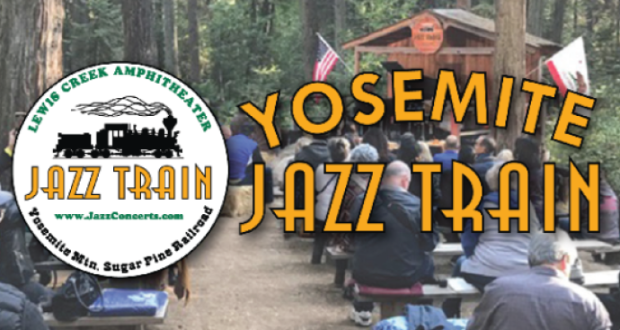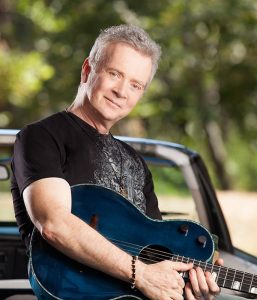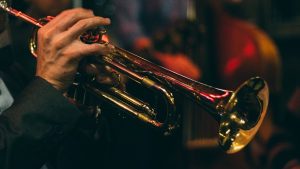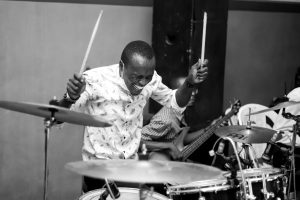MOUNTAIN COMMUNITIES — Over the years, Peter White has maintained a reputation as one of the most versatile and prolific acoustic guitarists on the contemporary jazz landscape.
Limited tickets are available for these three-hour events that start on September 25th at 3 p.m.
Armed with an unparalleled combination of lyricism and energy, he combines elements of jazz, pop and classical guitar to create a sound that is singular and at the same time accessible to a broad audience.
Your inclusive full fare includes appetizers, intimate artist meet-and-greet at the train station followed by a narrated narrow-gauge steam train ride to the Lewis Creek Amphitheater for an acoustic performance by your favorite featured artist in the Sierra National Forest.
The Yosemite Mountain Sugar Pine Railroad is located only 10 minutes from the southern entrance of Yosemite National Park off of Highway 41.
Upon arrival and easy check-in at the Train Station, passengers may enjoy a selection of beer and wines available for purchase with an appetizer beginning at 3 p.m.
See you there!
A Brief History of Jazz in America
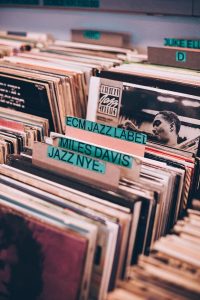 Jazz is a music genre that originated in the African American communities of New Orleans, United States, in the late 19th and early 20th centuries. It developed from roots in blues and ragtime, and evolved into a distinct style by the 1930s. Jazz combines elements of African-American gospel music, Afro-Cuban music, European military band music, French cabaret, and other musical genres. Since the 1920s jazz age, jazz has become recognized as a major form of musical expression.
Jazz is a music genre that originated in the African American communities of New Orleans, United States, in the late 19th and early 20th centuries. It developed from roots in blues and ragtime, and evolved into a distinct style by the 1930s. Jazz combines elements of African-American gospel music, Afro-Cuban music, European military band music, French cabaret, and other musical genres. Since the 1920s jazz age, jazz has become recognized as a major form of musical expression.
The word “jazz” may have come from the Creole French word “jass” or “jas” meaning “party” or “gossip”. From this, some assert that it should be pronounced to rhyme with “boss”, as in English ‘jazz’ means ‘to jazz up’. The origins of jazz are obscure but several theories have been advanced to explain them. Jazz was probably first played in New Orleans and then spread all over America by traveling musicians who used it as a form of entertainment for themselves and their audiences.
Jazz started to emerge at the beginning of the 20th century when black musicians began creating their own dance music played by small bands consisting of brass instruments (trumpets), saxophones (reeds), drums and piano. The music was influenced by early African-American music, such as spirituals and work songs, Western classical music and the syncopated rhythms of Latin American dance music.
The first jazz songs were called “ragtime” and were played by black musicians who had moved north from the southern United States. Ragtime was a form of music with syncopated rhythms, or beats that fall off the beat. This style of music was popular in New Orleans, where it evolved into jazz.
The first jazz bands were small ensembles. They played dance music that was popular in the United States at the time, including marches and cakewalks. The musicians improvised their parts, meaning they made up new melodies and rhythms as they played.
The first jazz recordings were made in 1917 by the Original Dixieland Jazz Band, a group of white musicians from New Orleans. The band recorded “Livery Stable Blues” and “Dixie Jass Band One Step” on November 3, 1917. These songs were very popular at the time and helped make jazz music popular across America. Jazz music became very popular in the 1920s, and many record companies started recording jazz bands.
The Kansas City style of jazz was created by musicians who moved to Kansas City from New Orleans. This style had a fast rhythm and was played by large ensembles. It was also known as the “swinging” sound because it made people feel good when they heard it.
The most famous Kansas City jazz musicians were Count Basie and Walter Page, who formed a band known as the “Blue Devils.”
From these early beginnings jazz would evolve in countless directions, but would always remain America’s music.
Check out this great video on the history of Jazz!

